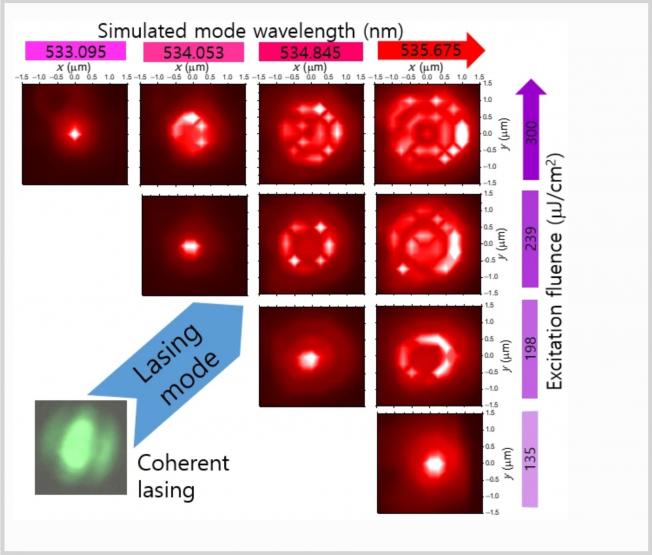Giant Nonlinear Optical Absorption of Freestanding Graphene Oxide Films for Femtosecond Pulse Compression
ACS Applied Materials & Interfaces American Chemical Society 17:30 (2025) 43476-43487
Abstract:
We have successfully produced an ultrathin freely suspended GO film, which is a biomimetic structure inspired by the transparent dragonfly wing structure. Based on a colloidal self-assembly process over a large area, solvent evaporation was applied within a limited opening geometry. The free-standing GO film shows a significant enhancement of the nonlinear optical absorption, where saturable absorption and photoinduced absorption were observed at dramatically decreased excitation fluence compared with other work on GO films dispersed on substrates. Surprisingly, we also found that free-standing GO films are beneficial for compressing femtosecond pulses around 800 nm. Using a frequency-resolved optical gating as well as an open aperture Z-scan method, the origin was found to be associated with two effects. While the pulse shortening results from saturable absorption, the chirp effect is also suppressed due to the presence of an inflection point around 800 nm in the refractive index spectrum of free-standing GO film.Plasmon-Enhanced Photo-Luminescence Emission in Hybrid Metal–Perovskite Nanowires
Nanomaterials MDPI AG 15:8 (2025) 608-608
Abstract:
<jats:p>Semiconductor photonic nanowires are critical components for nanoscale light manipulation in integrated photonic and electronic devices. Optimizing their optical performance requires enhanced photon conversion efficiency, for which a promising solution is to combine semiconductors with noble metals, using the surface plasmon resonance of noble metals to enhance the photon absorption efficiency. Here, we report plasmon-enhanced light emission in a hybrid nanowire device composed of perovskite semiconductor nanowires and silver nanoparticles formed using superfluid helium droplets. A cesium lead halide perovskite-based four-layer structure (CsPbBr3/PMMA/Ag/Si) effectively reduces the metal’s plasmonic losses while ensuring efficient surface plasmon–photon coupling at moderate power. Microphotoluminescence and time-resolved spectroscopy techniques are used to investigate the optical properties and emission dynamics of carriers and excitons within the hybrid device. Our results demonstrate an intensity enhancement factor of 29 compared with pure semiconductor structures at 4 K, along with enhanced carrier recombination dynamics due to plasmonic interactions between silver nanoparticles and perovskite nanowires. This work advances existing approaches for exciting photonic nanowires at low photon densities, with potential applications in optimizing single-photon excitations and emissions for quantum information processing.</jats:p>Electrolyte-assisted polarization leading to enhanced charge separation and solar-to-hydrogen conversion efficiency of seawater splitting
Nature Catalysis Springer Nature 7:1 (2024) 77-88
Abstract:
Photocatalytic splitting of seawater for hydrogen evolution has attracted a great deal of attention in recent years. However, the poor energy conversion efficiency and stability of photocatalysts in a salty environment have greatly hindered further applications of this technology. Moreover, the effects of electrolytes in seawater remain controversial. Here we present electrolyte-assisted charge polarization over an N-doped TiO2 photocatalyst, which demonstrates the stoichiometric evolution of H2 and O2 from the thermo-assisted photocatalytic splitting of seawater. Our extensive characterizations and computational studies show that ionic species in seawater can selectively adsorb on photo-polarized facets of the opposite charge, which can prolong the charge-carrier lifetime by a factor of five, leading to an overall energy conversion efficiency of 15.9 ± 0.4% at 270 °C. Using a light-concentrated furnace, a steady hydrogen evolution rate of 40 mmol g−1 h−1 is demonstrated, which is of the same order of magnitude as laboratory-scale electrolysers.Reducing nonradiative losses in perovskite LEDs through atomic layer deposition of Al2O3 on the hole-injection contact
ACS Nano American Chemical Society 17:4 (2023) 3289-3300
Abstract:
Halide perovskite light-emitting diodes (PeLEDs) exhibit great potential for use in next-generation display technologies. However, scale-up will be challenging due to the requirement of very thin transport layers for high efficiencies, which often present spatial inhomogeneities from improper wetting and drying during solution processing. Here, we show how a thin Al2O3 layer grown by atomic layer deposition can be used to preferentially cover regions of imperfect hole transport layer deposition and form an intermixed composite with the organic transport layer, allowing hole conduction and injection to persist through the organic hole transporter. This has the dual effect of reducing nonradiative recombination at the heterojunction and improving carrier selectivity, which we infer to be due to the inhibition of direct contact between the indium tin oxide and perovskite layers. We observe an immediate improvement in electroluminescent external quantum efficiency in our p-i-n LEDs from an average of 9.8% to 13.5%, with a champion efficiency of 15.0%. The technique uses industrially available equipment and can readily be scaled up to larger areas and incorporated in other applications such as thin-film photovoltaic cells.Dispersive near-infrared metalens integrated with linear polarization filtering functionality
Results in Optics Elsevier 21:Appl. Phys. Lett. 124 24 2024 (2025) 100902



